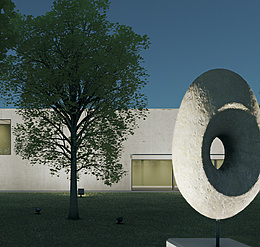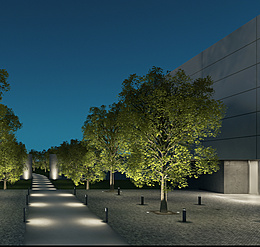
Spatial patterns are the basis for geometric lighting designs which match the architecture. Distinctive spatial patterns often give an emphatic design brief for the lighting, whereas neutral surfaces and structures allow greater scope to work with lighting patterns.








